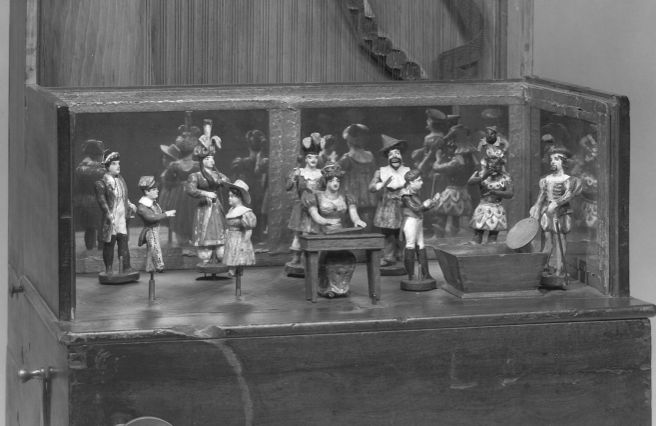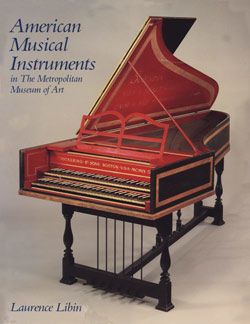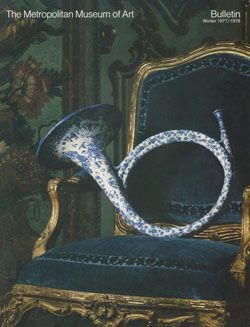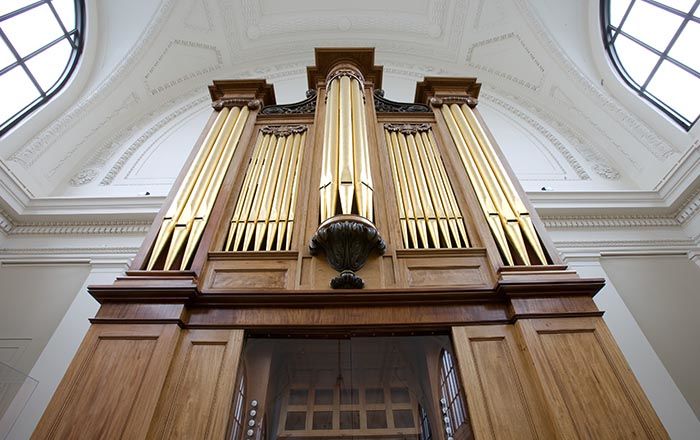Barrel Piano
George Hicks British
When the crank is turned, pins on a rotating cylinder engage hammers that strike the strings, playing any of ten tunes, including "Yankee Doodle." At the same time, a bell rings and the articulated figures move in time to the music. One figure deposits coins in a trough. Shown with front string cover panel removed. Barrel pianos were developed in the early nineteenth century. One of the earliest builders was Joseph Hicks in Bristol, England, who had established a successful business by at least 1816 building both barrel pianos and barrel organs. Another member of the family, John, was soon active in London. It is probable that George Hicks, who lived in Brooklyn and built this barrel piano, was another relative.
Technical description: Dark-stained pine case with mahogany lid, enclosing a vertical pine soundboard and, below and in front of the soundboard, a crank-operated pinned barrel that activates felt-covered mahogany hammers striking 24 triple-strung piano notes (mainly diatonic with F#s, range c1-e3, lowest 2 notes c1 and f1) and 2 uncovered hammers striking brass bells; the crank, at front left side, also activates 10 painted articulated figures that stand on a tray above the barrel, surrounded by mirrors on 3 sides, one of the figures also controlled by a knob that causes it to lift a plate to collect coins; round door on right of case allows barrel and its support to slide out when figure tray is removed; barrel shaft protrudes from left side where a drop lever engages slots for 8 tunes; a lever above this moves hammer rail into playing position; pitch letters written in ink beneath the square tuning pins in maple pinblock at top of soundboard; brass brackets held carrying strap.
#9405. Barrel Piano
This image cannot be enlarged, viewed at full screen, or downloaded.
This artwork is meant to be viewed from right to left. Scroll left to view more.







